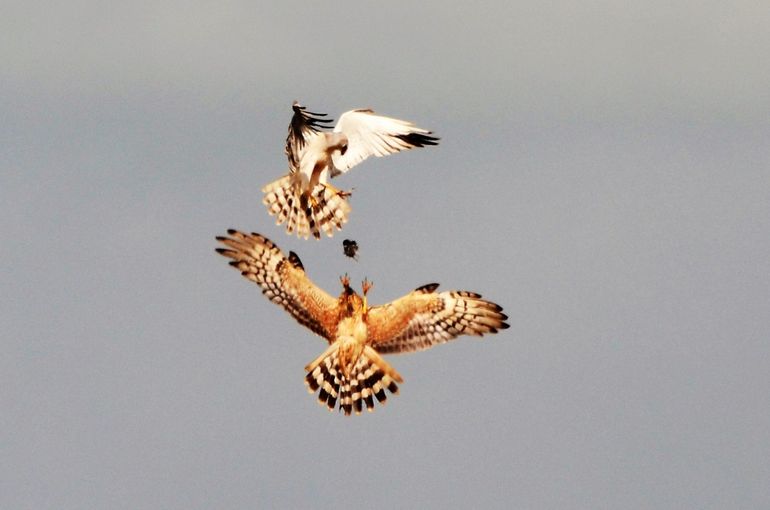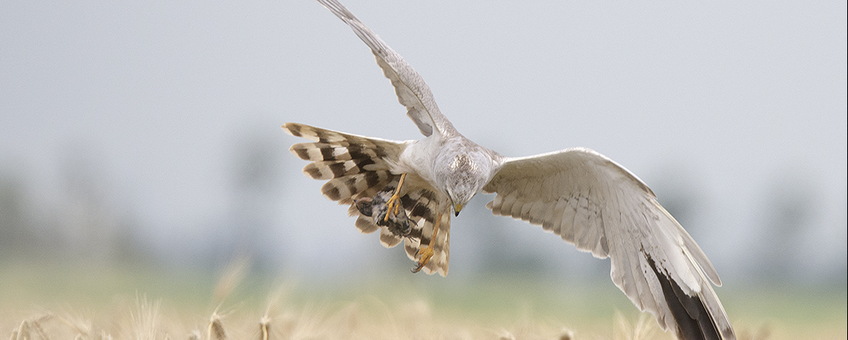
The Pallid Harrier, a new breeding species for the Netherlands
Grauwe Kiekendief - Kenniscentrum AkkervogelsPure Pallid Harriers
Three years ago, a male Pallid Harrier was found displaying with a female Montagu’s Harrier near Finsterwolde in the province of Groningen, the Netherlands. That attempt didn’t develop any further. This time however, the couple consisted of two pure Pallid Harriers.
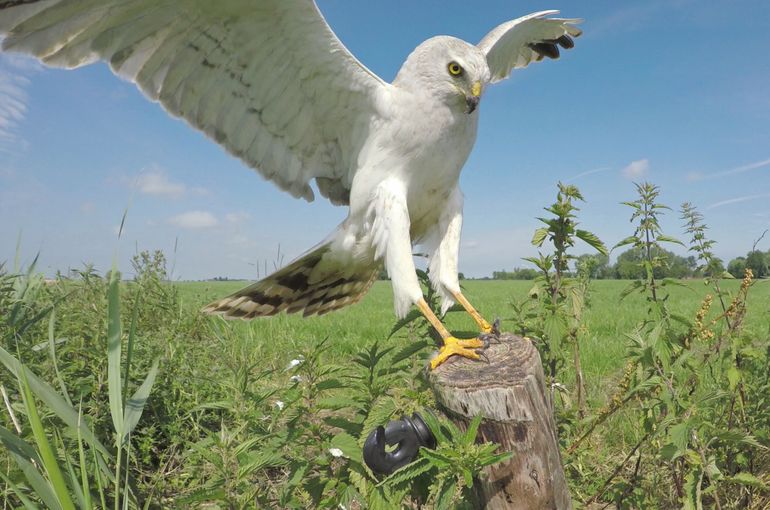
Male Pallid Harriers can easily hybridise with female Montagu’s or Hen Harriers. According to the Finnish raptor expert Dick Forsman these crossbreeds can produce fertile male offspring. "Whether this could also result in fertile female hybrids remains unclear", states Forsman.
Several experts agreed unanimously on the identification of the two Pallid Harriers after investigating pictures of the Groningen breeding pair. Staff from the Dutch Montagu’s Harrier Foundation determined that both birds were in their 3rd CY and therefore born in 2015, based on their plumage characteristics and eye color.
A lucky sighting during farmland bird monitoring
When volunteer Willem-Pier Vellinga discovered the male Pallid Harrier by chance during breeding bird counts in May it struck him that the birds were showing breeding behaviour. The following day, together with harrier expert Ben Koks the breeding location was found in a field of winter barley. Subsequently, the nest was protected with a fence by members of the Dutch Montagu’s Harrier Foundation, to save it from nest predation. During the whole breeding season, the birds were studied in detail to gain an insight into the ecology of this spectacular raptor species.
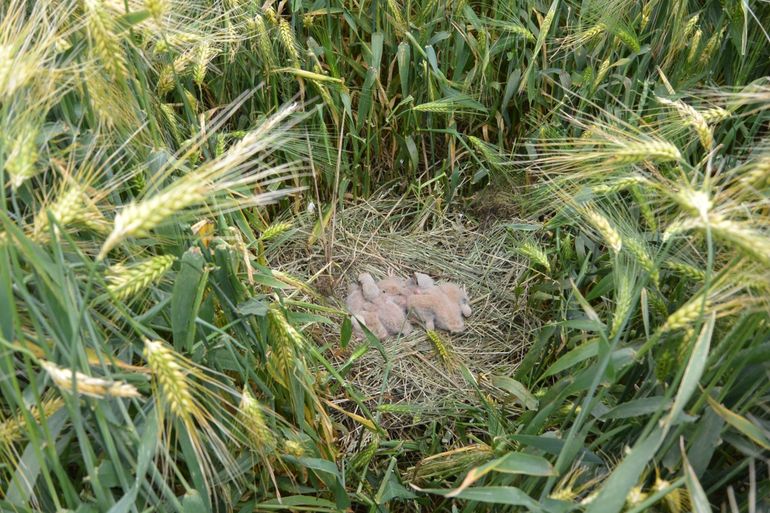
Breeding ecology of the Dutch nest
Based on the moult patterns of the female the laying date of the first egg was estimated to be between 8 and 10 May. The nest protection fence was deployed on 17 June. On that date, the nest contained five chicks of between three and eleven days old. Without nest protection the chance of predation by beech marten or fox, that could hear the racket of the young, would have been high.
Besides protection from predation it was important to preserve the nest from the wind. With heavy rains and strong winds barley tends to tilt over and may bury the nest and its residents, causing the end of the breeding attempt. This was a real risk when wind and rain hit the fields of Groningen on 9 June. The Dutch nest is thereby the first ever protected nest of Pallid Harrier anywhere in the world.
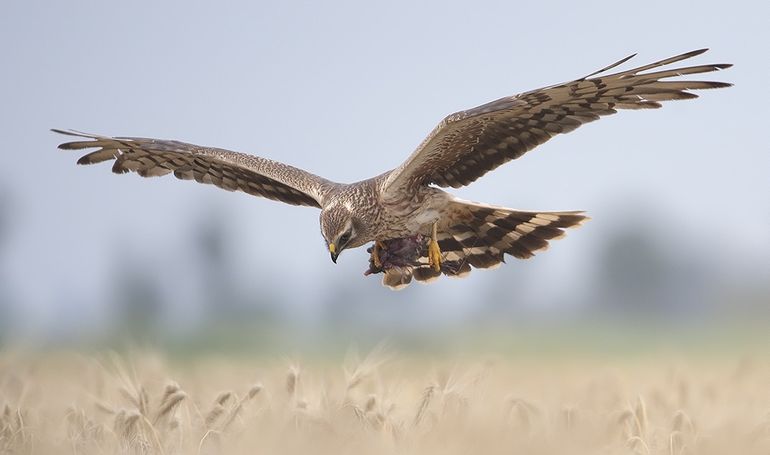
In early July the barley was harvested. Staff and volunteers of the Dutch Montagu’s Harrier Foundation were on site to prevent the young from being killed by the combine harvester. Two of the young had already fledged; the other two could almost fly. The fifth chick had disappeared in the early chick phase. It was found that all four remaining young were females. The four were ringed, also with black color rings with white inscription, just before they were able to fly.
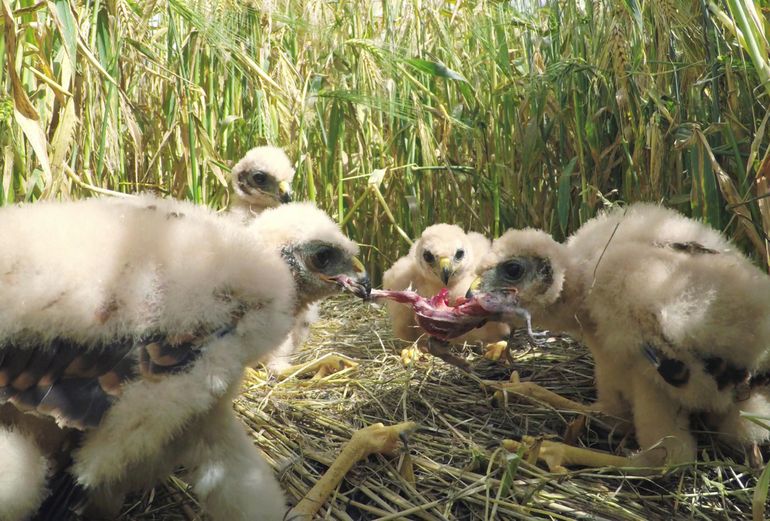
Escaped the radar
Never before has a new breeding bird species in the Netherlands been documented in so much detail as these Pallid Harriers. It is also unusual that such a rarity has escaped the radar of the birdwatcher’s community, which ultimately allowed the birds to raise their chicks without any disturbance. But don’t worry, there are pictures, videos and sound recordings so every enthusiast has the chance to share in one of the most magic events in ornithology that happened in our part of Europe during the last decades!
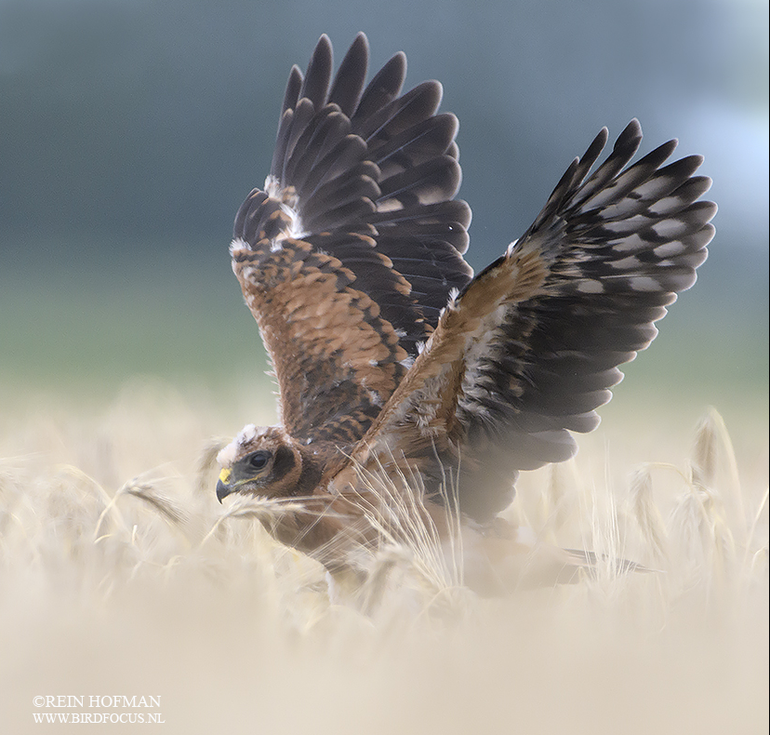
Rare migrants
Not that long ago, Pallid Harriers were rarities only spotted occasionally on migration in this part of the world. In recent years the number of Pallid Harriers observed during migration has increased. During the last two years several individuals have even overwintered in the Netherlands. However, it remains a mystery where these two breeding birds came from and how we can explain their appearance in Groningen.
The Pallid Harrier is certainly not a species in ascent in neighbouring countries, such as Cranes or White-tailed Eagles, Ospreys or Black Storks are. It is still a rather mysterious species. The nearest documented breeding pair this year was near Oulu in Finland. The next breeding population is located in the steppes of Eastern Europe and Asia.
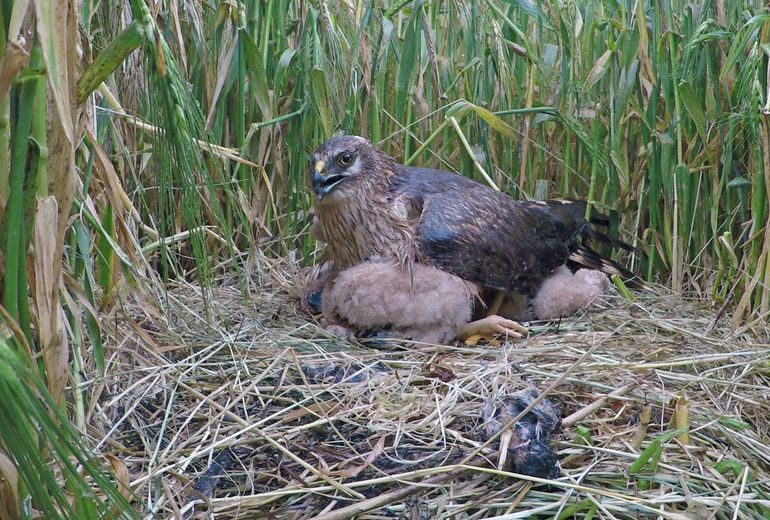
Pallid Harriers are under pressure everywhere
Ornithologists are worried about the Pallid Harrier. It is a fact that the species is in strong decrease in the wintering areas in India and Africa. Decreasing populations are also observed in important parts of Kazakhstan due to agricultural intensification. Many breeding birds of the steppes are losing their habitat due to large-scale changes in land use.
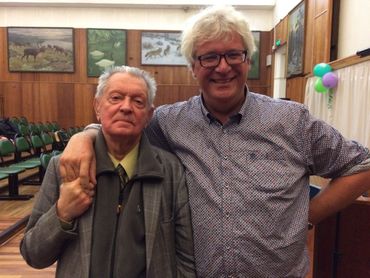 The status of the species in Russia is unclear. Raptor expert Vladimir Galushin from Moscow, states that the agricultural policy in Russia is not exactly prosperous. This results in vast abandoned areas of fallow land. The former farmland quickly overgrows with bushes and little trees which attracts many songbirds. This seems, temporarily, a perfect habitat for Pallid Harriers which increase in the fallow farmland areas. While other harrier species hunt primarily on voles, Pallid Harriers prefer songbirds, just like Sparrowhawks do. The Dutch Montagu’s Harrier Foundation also got to know Pallid Harriers as notorious bird hunters during expeditions to the wintering areas in India and Africa. The breeding male in Groningen was actually observed hunting on farm properties, catching swallows, sparrows, starlings and tits.
The status of the species in Russia is unclear. Raptor expert Vladimir Galushin from Moscow, states that the agricultural policy in Russia is not exactly prosperous. This results in vast abandoned areas of fallow land. The former farmland quickly overgrows with bushes and little trees which attracts many songbirds. This seems, temporarily, a perfect habitat for Pallid Harriers which increase in the fallow farmland areas. While other harrier species hunt primarily on voles, Pallid Harriers prefer songbirds, just like Sparrowhawks do. The Dutch Montagu’s Harrier Foundation also got to know Pallid Harriers as notorious bird hunters during expeditions to the wintering areas in India and Africa. The breeding male in Groningen was actually observed hunting on farm properties, catching swallows, sparrows, starlings and tits.
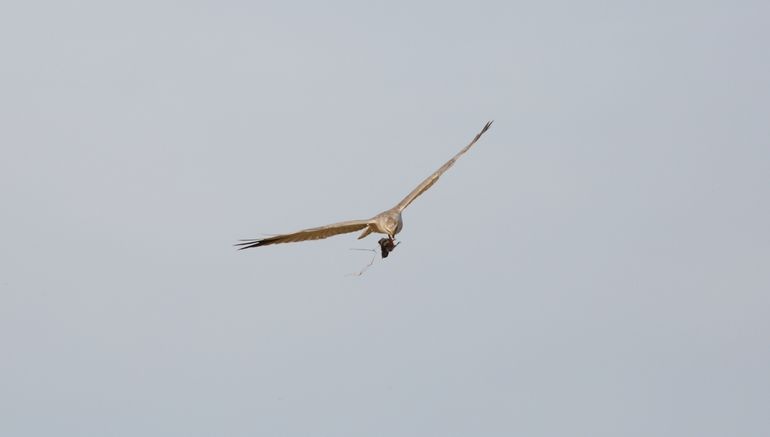
Exceptional case of a breeding pair
Why the Dutch breeding pair has ended up nesting in an intensive agricultural landscape, thousands of kilometres from other breeding Pallid Harriers, remains a fascinating as well as complex question.
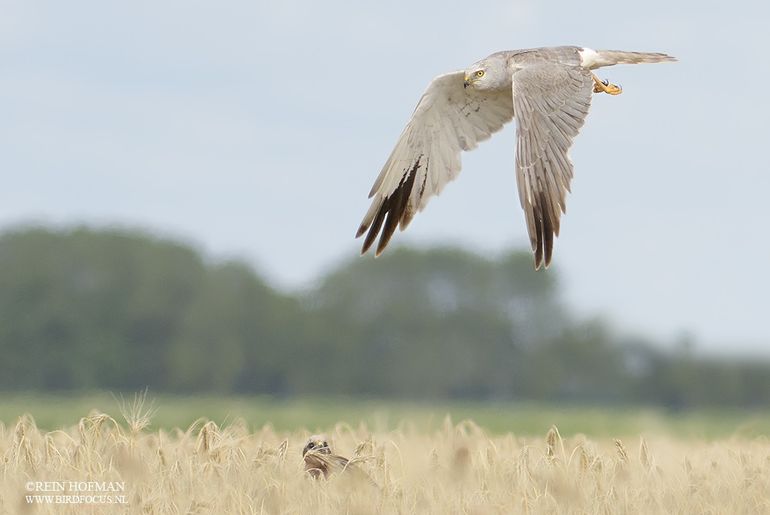
Text: Ben Koks & Willem-Pier Vellinga, Werkgroep Grauwe Kiekendief
Pictures: Rein Hofman, Birdfocus.nl (lead photo: male bringing prey to the nest); Ruurd Jelle van der Leij, Ruben Smit productions; Rob Buiter; Theo van Kooten; Nika Kretova; Ben Koks
Movie: Ruben Smit Productions
Watch stills from the footage from the action cam in the nest, shot by Ruurd Jelle van der Leij/Rubensmitproductions.nl: http://www.pbase.com/ruurdjellevanderleij/pallid_harrier_.
Photographer Rein Hofman portrayed the Pallid Harriers from a hide near the barley field: http://www.birdfocus.nl/steppenkiek/steppekiekendief%203.htm.

